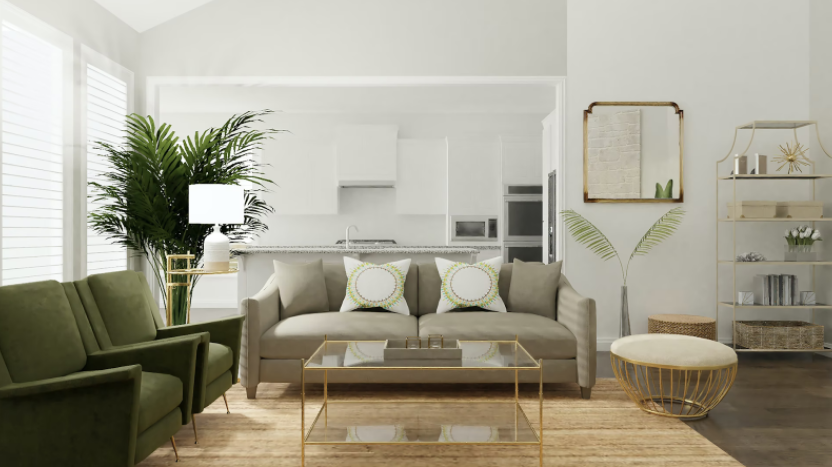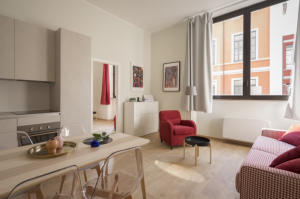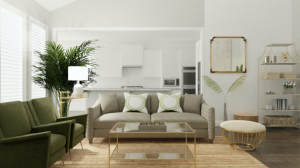Protecting Hardwood Floors From Furniture
November 15, 2021

[Source: Unsplash]
In the world of floor care, importance is often emphasized on protecting your hardwood floor from getting scratched and damaged by your furniture. All it takes is one careless drag of the chair across the floor to potentially leave a permanent mark on the wood.
In this article, we will go over everything you need to know about good floor-friendly habits that will keep your hardwood looking as spotless as the day they were installed. Let’s get started.
Take Off Your Shoes
This is already fairly common in many eastern countries. By taking off your shoes before stepping into a room in general, you’re preventing yourself from tracking in dirt and grime from outside. For hardwood floors specifically, the tracked-in moisture can seep into the floorboards and further damage them. Consider installing a shoe organizer of some kind so that you aren’t just leaving your shoes in a random corner.
Pick It Up
The simplest tip you can follow for keeping your floors unmarred involves simply being extra careful. Rather than dragging your couch across the floor when it comes time to redecorate, instead enlist somebody to help you carry the other end of it so that no part of the couch is touching the floor. You can’t leave marks if it never meets the floor in the first place!
Don’t Use Wheeled Furniture
The hard plastic wheels on your office chair, bench, or any such furnishing will quickly cause scratches if you’re just rolling around on it without protection. It’s just a terrible idea that you will regret as soon as you start doing it.
Buy an Area Rug
Area rugs are a good option if used strategically. By keeping your furniture on an area rug, you create a gap between the floor and legs of the furniture. In addition to protecting from scratches, it will also help keep dirt and other junk from getting spread all over the floor. Not to mention that a rug on top of a hardwood floor is always a pleasing visual. Don’t cover the entirety of your beautiful hardwood floor, only the places that have furniture on them.
Redo the Finish Periodically
Over time, there is a small possibility that the finish can start to have small imperfections. When this happens, the floor in those spots becomes a little more susceptible to damage than it already was. When you start to see light scratches appear, that’s your cue that it’s time to get the finish redone. This will not only restore protection, but depending on the finish, it may even buff out many of the lighter scratches completely.

[Source: Unsplash]
Furniture Pads
Now the big one. If you’re not going to use a carpet, and often even if you do, you should also consider putting protectors on the bottom of the furniture legs to keep them from scratching the wood. If you’re really cheap, there’s always the old tennis ball trick when you put holes in them and then stick them on the ends of the legs, but there are much more elegant ways to do this than that.
Tap-On
A Tap-On protector is held on by a small tack or a hollowed-out nail. These are the most secure method of attaching pads. You will still need to be wary about breaking the pads however, as if the nail gets exposed, you will definitely get scratches in the floor.
Self-Adhesive
Self-Adhesive pads are the cheapest and easiest to find. All you need to do to attach them is peel off the paper or plastic cover and adhere it to the bottom of the legs. The downside to this convenience is that it won’t last nearly as long. Check on them periodically to ensure they’re still attached propyl and aren’t getting dirty.
Slip-On
These protectors work exactly like they sound. You just slide them right over the legs, like socks. Assuming they fit, they strike a good balance between durability and secureness.
There are also material types for the pads to consider.
Plastic
Plastic covers should generally be avoided if at all possible. They will wear down the finish on the hardwood over time and even create scratches – the very thing you’re trying to prevent.
Rubber
Rubber is a much better option, though not perfect. It’s best used on furniture like couches, anything that isn’t going to be moved too often. If you do use it on things like chairs, move them carefully, as you may leave scuff marks in the wood. On the up side, you will find it very difficult for it to slide around thanks to the rubber.
Felt
Felt pads are usually the best choice for hardwood. Their softness will prevent the finish on the wood from wearing out and there’s no real chance of any gouges being made. Just make sure you get pads that are decently thick, as ones that are too thin can wear down quickly and expose the legs back to the wood again.
Consider “Furniture Traffic”
How often you’re moving your furniture around is a major factor in choosing what type of padding will be best for your situation. As you see, there is a wide array of different options for different use cases to consider. There are a few areas in particular where furniture traffic becomes the most important.
The dining room and kitchen space is one such location. Failing to choose the right pad for this will be the most disastrous as it’s typically where the most furniture movement is taking place. Self-Adhesive and Slip-On pads are going to wear down faster, so make sure you’re replacing them as needed.
The family room is another important place. Kids may be jumping about on the couch, as well as people simply throwing themselves onto it after a long day. These actions will shove around the furniture rather violently depending on their weight, so choosing a rubber pad may be the best option here.
Conclusion
As you now understand, there are plenty of great ways to keep your hardwood floors safe no matter the occasion or situation. Homeowners have long since dealt with the frustration that comes from the interaction of floors and furniture, including scratches, dings, and everything in between. Most just deal with the problems as they come and don’t take steps to avoid them from happening again. A major bonus to take into consideration is that your property value can be lowered if damage can be detected. By following these tips, your floors will have no trouble lasting the test of time.






